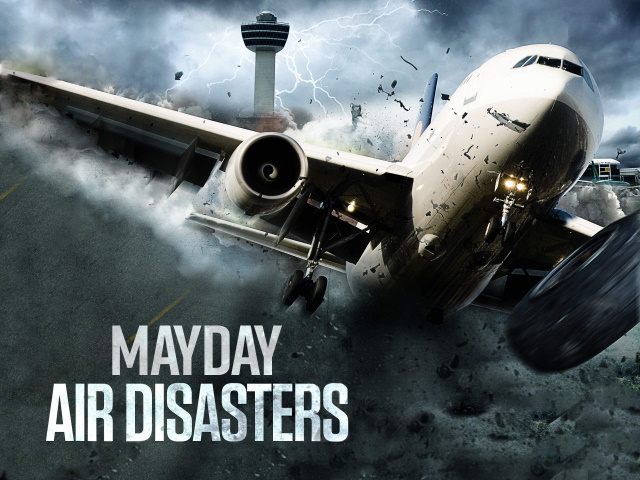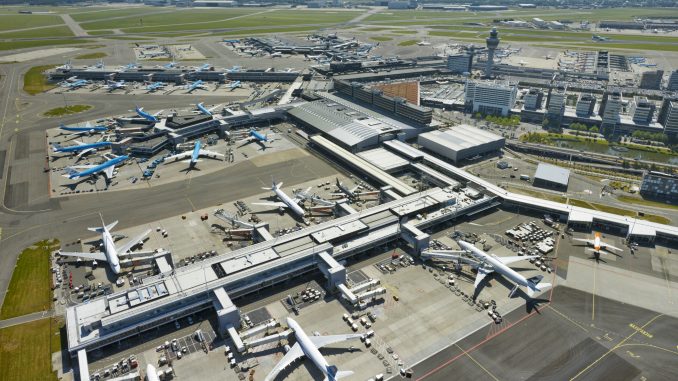

There’s no two ways about it: flying can be a very dangerous business. While aircrew are of course well trained and professional, and probably ninety-nine out of every hundred flights lands safely (I don’t know the actual figures) there is always the chance that something will go wrong. And there’s so much that can go wrong, from weather conditions to mechanical failure to sloppy maintenance and of course human error. Wind shear, wake turbulence, downspouts are only a tiny fraction of the phenomena that pilots have to contend with, and while they’re of course trained to watch for these things, it only takes a split-second’s lapse in concentration, the merest moment of distraction or an inability to realise how serious things are before they’re fighting for control of the aircraft as it dives, twists and turns, and tries to head towards the ground.
So unfortunately, though they’re still rare enough not to stop most of us boarding that plane, air accidents are relatively common, and in this section I’ll be looking at some of the worst and most famous. I’m a big fan of the show
Air Crash Investigation which I believe goes under other names in the US, notably
Mayday, so I know quite a bit about the various crashes and accidents, and while they can be hard to watch or write about (these are real stories, after all, of real people who lost their lives, and the ones left behind) it is nevertheless interesting to see the many and varied causes of the crashes, and, more importantly, how these things being brought to the attention of the authorities end up making air travel that little bit safer.

 Date:
Date: October 4 1992
Location of crash: Bijlmermeer district, near Schiphol, Amsterdam, Netherlands
Airline: El Al (Israeli Airlines)
Flight: EA1862
Aircraft: Boeing 747-200
Planned destination: Tel Aviv, Israel
Crew: Captain Yitzhak Fuchs, First Officer Arnon Ohad, Flight Engineer Gedlaya Sofer
Cause of crash: Engines detached from aircraft causing a loss of lift
Deaths: 43-47

En route from New York back to their homebase in Tel Aviv, El Al flight 1862, carrying suspected weapons for the Israeli military, takes off from Amsterdam’s Schiphol Airport at 1830 and flies east, the suburbs of Amsterdam below them. Suddenly there is an almighty bang and the aircraft lists out of control. Fighting against the plunging, twisting 747, Captain Fuchs manages to get it back under control, but his First Officer tells him that two of the Jumbo’s four engines are out of commission, and they head back to the airport for an emergency landing. The mayday call has emergency responders scrambling to meet the stricken aircraft as it struggles back.
Before it can reach the airport, however, the 747 starts to bank to the right again, and this time the captain is powerless to prevent it plunging towards the ground, where it impacts with the apartments in Bijlmermeer, taking out the building and showering others with white-hot jet fuel. All three crew are killed on impact, as well as one other El Al employee, who had been hitching a ride to Tel Aviv, where she was to be married. As the aircraft was only carrying cargo and no passengers, the largest number of casualties occur on the ground, where over forty residents are known to perish, some on impact, some due to smoke inhalation when the apartment blocks burst into flame.

As is often the case though with such tragedies, ordinary people display the selfless courage of movie star action heroes, rushing to the scene and rescuing anyone they can. Andre Bos, a resident whose flat is untouched, miraculously, risks his life in the fire kicking doors open and carrying out people who have been overcome by the smoke, and who otherwise would have died. Firefighters are quick to respond with the first fire engine arriving a mere five minutes after the crash. Hard on its heels come the inevitable news crews, anxious to cover the tragedy.

As the investigation begins, the fear is initially that a bomb or a missile may have taken out the 747. Given that it is an Israeli airline, Palestinian terrorists are suspected, and given that two engines failing at once is unlikely at best, this theory seems to hold water. However, an off-duty police officer reveals that he saw the two engines actually fall off the wing. Both were on the right wing, but when recovered by divers neither engine shows signs of bomb damage. Metal fatigue, combined with a freak set of circumstances, turns out to be to blame. The metal fuse pins holding the engines to the wings broke on one engine - the inner one - which then spun out and hit the outer engine, ripping it off the wing and so depriving the 747 of both the engines on the right.
Conclusions: Microscopic fractures in the fuse pins holding the inner engine to the right wing fail due to metal fatigue. They break and the engine plummets off the wing, hitting against the outer engine and ripping it off, along with a good section of the wing’s leading edge. This in turn disrupts the control surfaces that allow the plane to be manoeuvred through the sky. At his current speed, Captain Yitzhak is able to hold the 747 level, but when he has to slow down for landing and raises the nose, he loses control and the aircraft tips over, spiralling helplessly to the ground, where it crashes into the apartment block, exploding on impact.
Measures taken: Boeing strengthens all engine-to-wing fixtures, and initiates stringent checks for metal fatigue, ensuring such an accident is unlikely to ever happen again.
Unanswered questions: While air crash investigators of course do all they can to uncover the reasons behind every crash, and try to answer every questions, often there are gaps in their knowledge, facts left out of the report because they can’t be corroborated or sometimes even guessed at, or perhaps because they’re not directly pertinent to the investigation. Certainly, in what could certainly be termed a freak, perhaps even unique, accident of this sort, there are bound to be outstanding issues, questions that remain to be answered, doubts and possibly even the sense of a cover-up, as we’re dealing here with one of the world’s most belligerent military powers. And once military authorities of any sort are involved in a crash which involves civilians, you can bet they’re not going to give you the full story.
What exactly
was the cargo? Originally it’s mentioned as having been for the war effort, though the report doesn’t specifically say it’s weapons. The Dutch Minister of Transport confirmed the 747 had been carrying fruit, perfumes and computer components, and that there were no weapons or dangerous chemicals aboard. Whether she got this information from the Israeli government or military is uncertain; she may just have gone from the aircraft’s cargo manifest, which could have been falsified or fudged (we all remember Matrix Churchill, don’t we?) Later it was however admitted, as more and more people from the crash site began to come forward complaining of various medical and mental problems, that there was a quantity of dimethyl methylphosphonate, which can be used in the manufacture of the deadly Sarin gas, though the El Al spokesman who made the revelation in 1998 claimed it was “non-toxic”. Well of course he did.
Perhaps more worrying though was the revelation that the tail of the aircraft had been loaded with depleted uranium, to serve as trim weight. This, apparently, was standard practice for Boeing among its fleet of 747s. Why did they use a dangerous radioactive element? Guess you’d have to ask them, but it did raise concerns that radioactive isotopes could have been released on impact and disseminated into the air, something Boeing hotly denied. But again, you’d expect that.